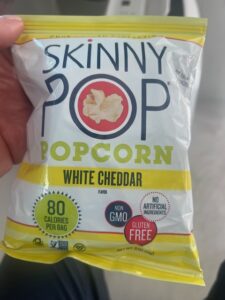Study Finds Widespread Contamination in 97% of Chicken Sold in the US!
January 23, 2014
 453
453 
Forget the alcohol. Never mind the prescription drugs. It looks like the FDA should require a new WARNING label on chicken!
That’s because a startling new report reveals:
97% of chicken breast contains harmful bacteria that can make you sick as a dog!
A recent Consumer Reports analysis of more than 300 raw chicken breasts purchased at stores across the U.S. found potentially harmful bacteria lurking in a whopping 97% of chicken – even organic brands!
The report analyzed raw samples of skinless, boneless chicken breasts… thin-sliced breasts… breast tenderloins… and skin-on, bone-in breasts from four major brands (Perdue, Tyson, Pilgrim’s and Sanderson farms).
Non-major brands (including store brands and minor brands), as well as a sampling of “anti-biotic free” and “organic” brands were studied…
… and the results will blow you away!
Overall there was no difference in the total occurrence of all bacteria between conventional brands and those labeled no antibiotics or organic. And all brands contained worrisome levels of bacteria.
But there’s more. Chicken was tested for six bacteria – including salmonella, campylobacter and staphylococcus aureus (which are some of the most common bacterial causes of food poisoning)… E. coli… and enterococcus.
A shocking amount of chicken breasts were tainted with E. coli (65.2%) and enterococcus (79.8%). More than half of the samples contained fecal contaminants. And about half (49.7%) of the chicken samples contained at least one bacterium that was resistant to three or more commonly prescribed antibiotics.
And that’s a HUGE deal since the CDC reports antibiotic-resistant infections are linked to at least 2 million illnesses and 23,000 deaths in the U.S. each year!
How the heck do these dangerous bacteria get into raw chicken in the first place?
According public health expert J. Glenn Morris Jr., M.D., here are three ways these harmful pathogens make it into the chicken you and your family eat for dinner…
So, is there any chicken breast that’s safe to purchase?
Since the Consumer Reports analysis couldn’t find a brand of chicken breast that had fewer bacteria than the rest – what kind should you buy?
According to Consumer Reports toxicologist Dr. Urvashi Rangan, Ph.D., “At the moment, the only way to protect yourself from becoming sick is to remain vigilant about safe handling and cooking.”
However, it’s good idea to purchase chicken that’s labeled antibiotic-free. These chickens are raised without the use of antibiotics. And buying these products helps…
By the way, if you’re confused about the difference between organic vs. free-range vs. antibiotic-free chicken.
Try these 6 tips to prepare chicken safely and reduce the risk of food-borne illness in your home!
Does this new research change the way you’ll shop for poultry from now on? Are you concerned about your risk of food-borne illness when you and your family eat chicken? Please share your comments below!


A high sugar diet can deplete your body of several important nutrients. Based on the research, here are the key nutrients that are often depleted by excessive sugar consumption: B Vitamins: Particularly vitamin B1 (thiamine), as well as B3, B5, and B6. These vitamins are essential for glucose metabolism Vitamin C: High glucose intake can […]


Sugar consumption has been linked to various chronic diseases, including cancer, inflammatory diseases, and other health conditions. Here’s an overview of the connections: Cancer While sugar does not directly cause cancer, excessive sugar intake may increase cancer risk through several mechanisms: Obesity: High sugar consumption can lead to weight gain and obesity, which is a […]


When you look at the packaging of Skinny Pop, you will see 80 calories per bag, Non-GMO, No Artificial Ingredients, Gluten Free On the surface, you would think that it is a very healthy alternative…so let’s break down the ingredients: Popcorn Popcorn is a whole grain derived from corn kernels. It’s a healthy ingredient that […]